The best that Sam Bankman-Fried could hope for at the start of this week was that his crypto exchange FTX would turn out to be the equivalent of Bear Stearns. Instead, it turned out to be Lehman Brothers.
Bear Stearns was a Wall Street trading house and investment bank whose collapse in 2008 signaled an acceleration of the global financial crisis that had been building since at least a year earlier. In the spring of 2007, two hedge funds owned by Bear Stearns began to meltdown as the market lost confidence in the subprime mortgage bonds in which they had invested something like $20 billion. After a few tense weeks during which the funds teetered on the brink of collapse, Bear announced it was injecting $3.2 billion into one of the funds to keep it afloat.
Wall Street breathed a sigh of relief. Nearly all the major investment banks and large commercial banks had very large holdings of similar bonds. They worried that if the Bear funds were forced to liquidate, prices of those bonds would plunge, forcing them to mark down their own holdings and scaring off investors. What’s more, many of the most prominent Wall Street firms—including J.P. Morgan Chase, Merrill Lynch, Goldman Sachs, and Barclays—had lent money to the Bear funds to allow them to purchase additional mortgage bonds. Those loans were collateralized by those mortgage bonds, so a fire sale that pushed down the price of the bonds would force them to mark down the value of that collateral and therefore the loans.
If this sounds like it was more than a bit dodgy, that’s because it was. Firms like Merrill Lynch were securitizing subprime mortgages that they sold to investors like the Bear Stearns hedge funds. Those sales were paid for, in large part, with money borrowed from firms like Merrill. The collateral for those loans were the mortgage bonds the loans paid for. There typically was some over-collateralization, meaning more bonds were pledged as collateral than the loan, paid for by equity investments in the hedge funds. The over-collateralization meant that even if the bonds lost some of their value, the loans would still be good. If the bonds lost a lot of their value, however, the loans would sour too.
This created a complex web of mutual interests and dependencies between these firms. The investment banks needed customers for their mortgages bonds and their prime brokerage desks’ supply of margin loans. Bear needed a constant supply of investments and credit for its hedge funds. This was how the dark magic of Wall Street worked before the financial crisis.
Note, however, that something like this happens when you buy a car or a house. The bank makes you a loan that you use to pay for a house. The collateral for that loan is the very thing you bought with it and the over-collateralization is your downpayment. If the house turns out to be worth far less than you thought, the loan will be underwater, and the bank will fear you might default on the loan. With cars, the analogy is even closer because the auto loan might be supplied by an arm of the very company that made the car you are buying, just like the subprime bonds were constructed by the investment bank supplying the credit to purchase it.
Bear’s bailout of its hedge funds did not work. Later in the summer of 2007, the two funds—which were officially based in the Cayman Islands—filed for bankruptcy protection. Fund managers Matthew Tannin and Ralph Cioffi were indicted for fraud the following year, led away in handcuffs by authorities. They were acquitted in 2009.
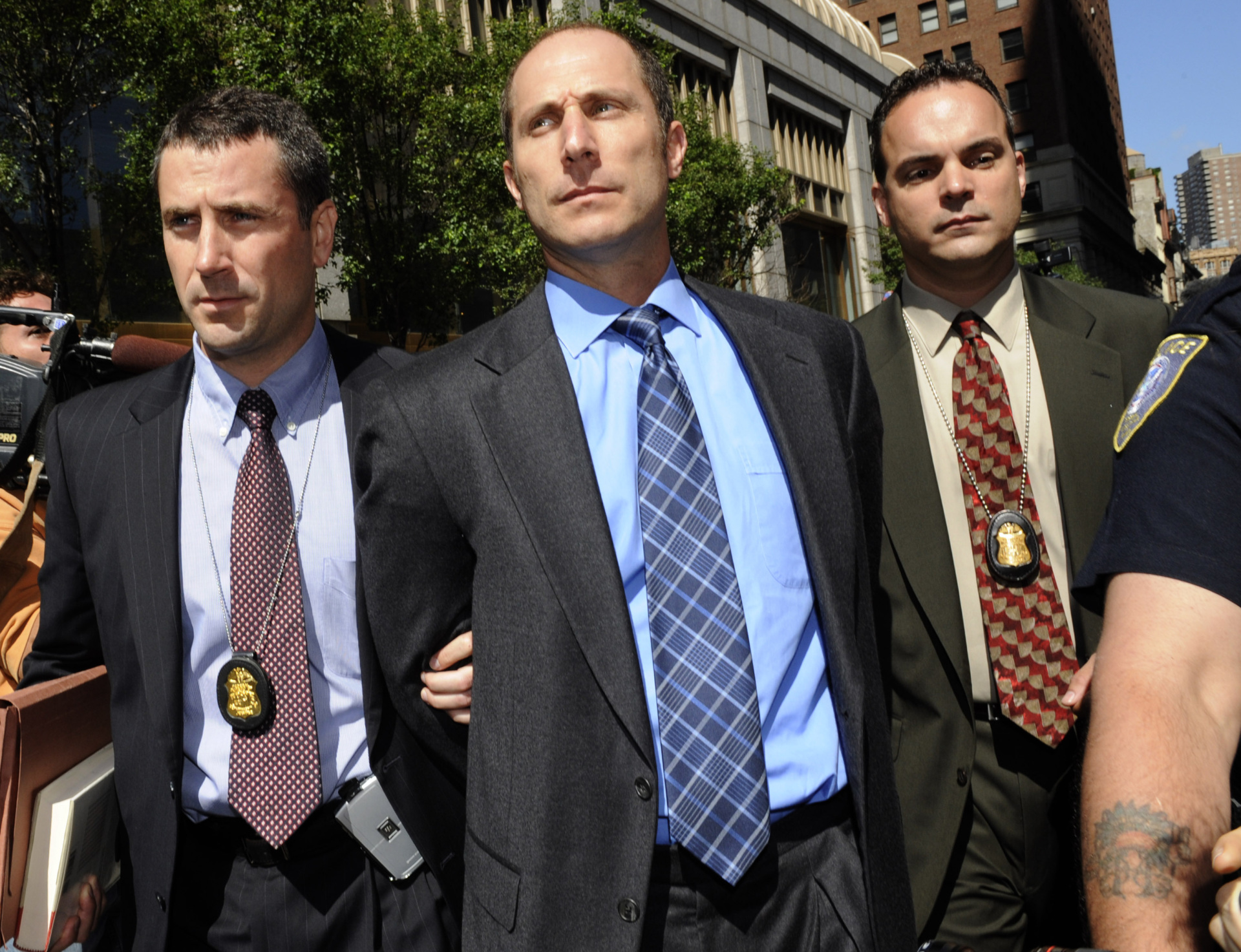
Former Bear Stearns hedge fund manager Matthew Tannin (center) is escorted out of his office in handcuffs by federal agents on June 19, 2008, in New York. (AP Photo/ Louis Lanzano)
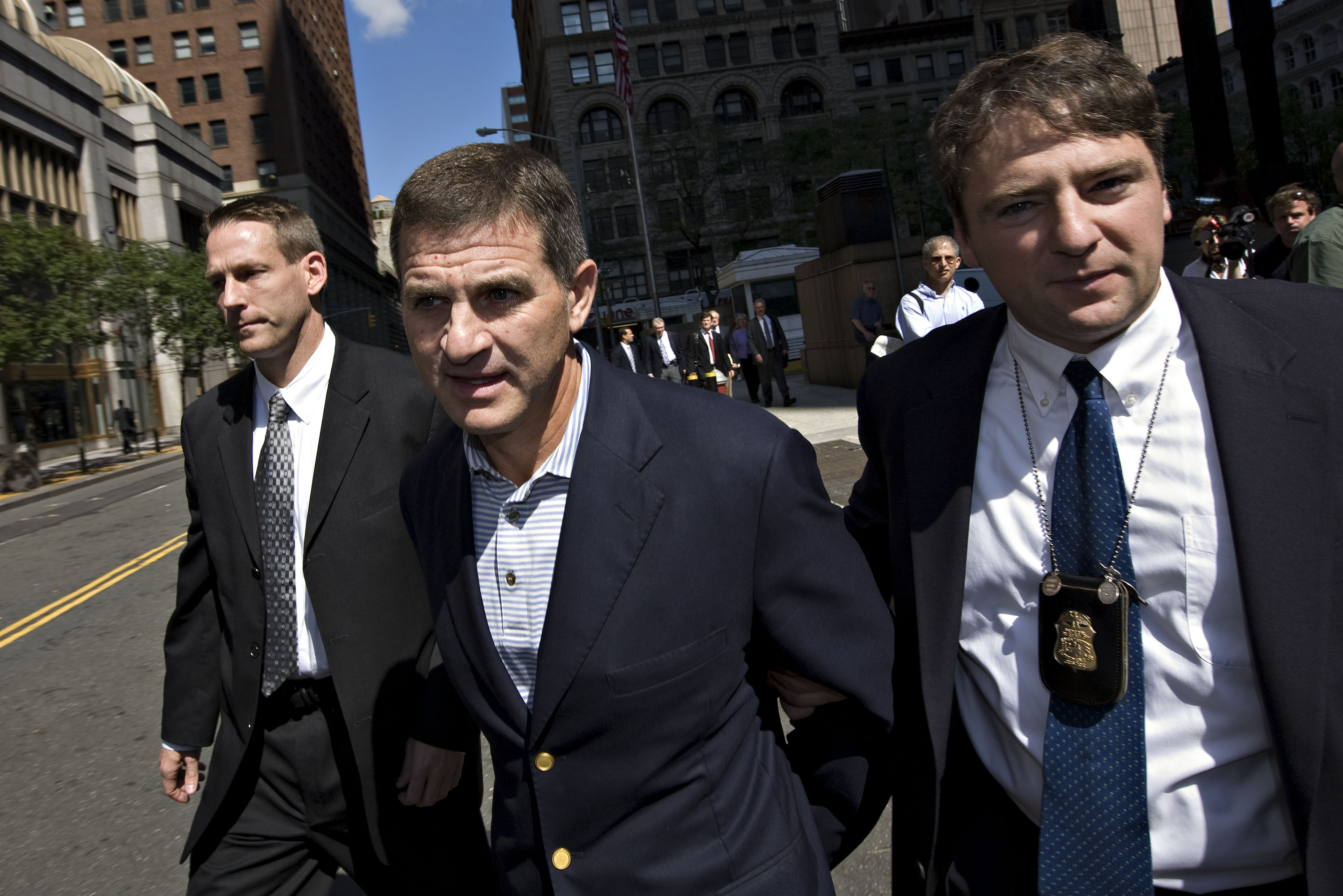
Former Bear Stearns manager Ralph Cioffi (center) is escorted out of his office in handcuffs by federal agents on June 19, 2008. (Daniel Acker/Bloomberg via Getty Images)
Less than a year later, Bear Stearns itself was facing questions about its viability. On Wednesday, March 12, 2008, shortly after 9 a.m., CNBC reporter David Faber asked Bear Stearns chief Alan Schwartz to respond to rumors that Goldman Sachs wouldn’t “accept the counterparty risk of Bear Stearns.” This question is often viewed as the beginning of the end of Bear. If Goldman lacked the confidence to do business with Bear, no one else would either. The following night, Bear informed the Securities and Exchange Commission that it would be “unable to operate normally on Friday.”
“The news hit the Street that Goldman had refused a routine transaction with one of the other big five investment banks. The message: don’t rely on Bear Stearns,” a report from the Financial Crisis Inquiry Commission said.
One of the classic roles of a central bank is to be a “lender of last resort.” In the classic formulation, a central bank ought to “lend freely, against good collateral, at a penalty rate.” (During crises, however, modern central banks often drop that bit about a penalty rate.) The basic idea is that when a bank faces a liquidity crisis that threatens to bring it down, the central bank should step in to supply credit to prevent the collapse—but only if the firm is solvent, meaning it has good collateral to put up to support the loan. If the bank is stuffed with bad collateral or lacks collateral sufficient to support the amount needed to pay its creditors even if it has all the time in the world, then it is insolvent and ought to go into resolution rather than get rescued by the central bank.
The Bear Stearns matter was complicated by the fact that it was not, technically, a bank. The Federal Reserve is only supposed to supply credit to banks, although in practice it has often figured out ways around this. In this case, the Fed stepped in to back a rescue loan from J.P. Morgan Chase, which eventually bought Bear Stearns outright for a fraction of where shares had been trading prior to the crisis of confidence. J.P. Morgan Chase chief executive Jamie Dimon would later say he would never do a deal like that again because it ended up costing the bank far more in penalties and fines based on Bear’s misdeeds than anticipated and produced far less value than expected. Some still say that Bear was, really, insolvent rather than just illiquid at the time. But the impression in early 2008 that this was a liquidity problem did prevent the company from going to zero or filing bankruptcy.
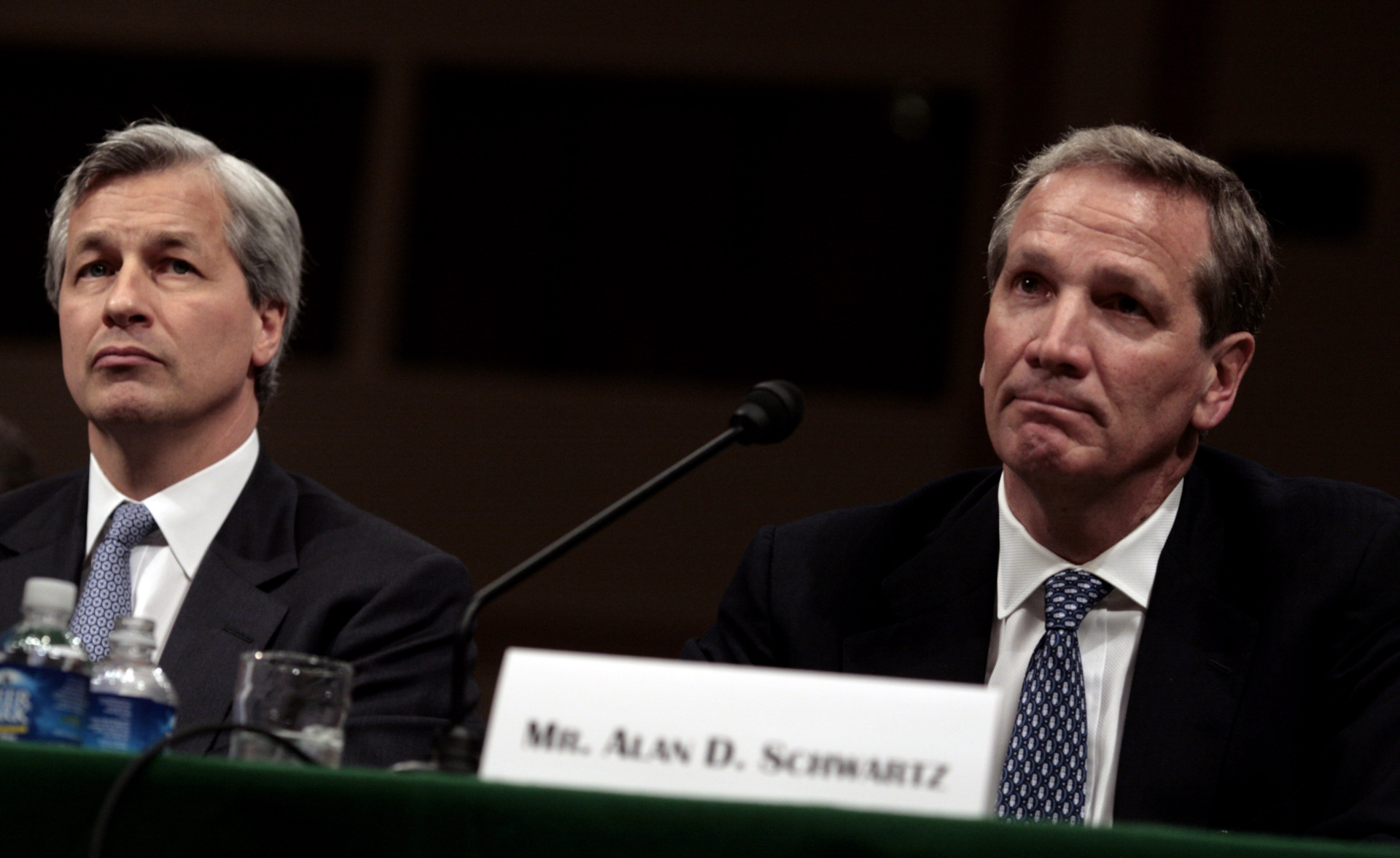
JP Morgan CEO James Dimon (left) and Bear Stearns CEO Alan Schwartz (right) testify before Congress on April 3, 2008. (Melina Mara/The Washington Post via Getty Images)
By the time Lehman Brothers faced collapse in late August and early September of 2008, many were convinced that the problems with these Wall Street firms were not just liquidity problems. They were solvency problems. A buyer of a firm, even someone who acquired them for essentially nothing at all, might wind up losing money because their liabilities—financial and legal—exceeded their assets. The impression was that their assets were overvalued, their reputation in the market severely tarnished, and their liabilities unknowable but probably much higher than expected. Lehman found there were no buyers and no new investors offering rescue loans or capital. It filed for bankruptcy.
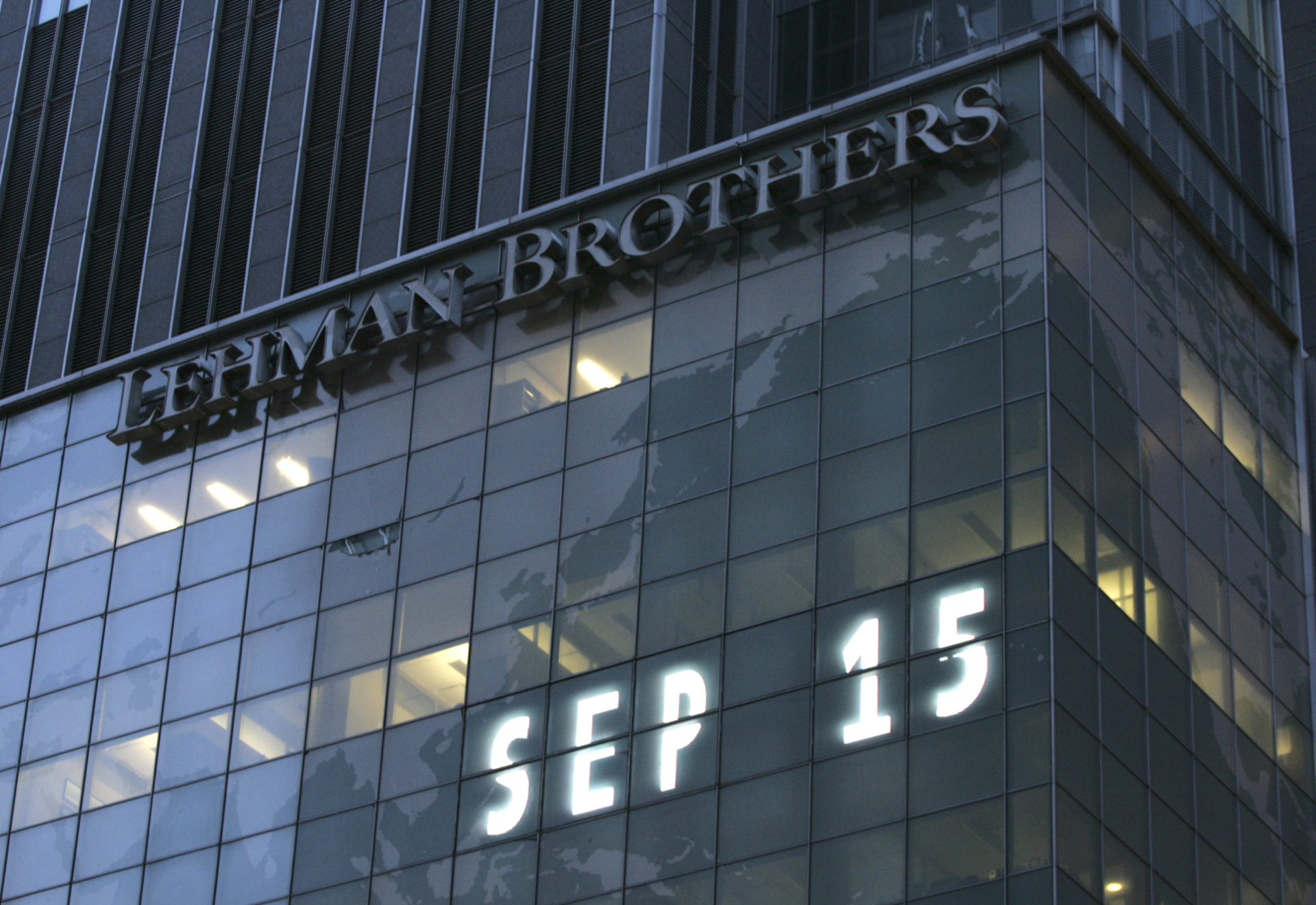
Lehman Brothers world headquarters in New York City is shown on September 15, 2008, the day the 158-year-old investment bank filed for bankruptcy. (AP Photo/Mark Lennihan)
We’re still learning exactly what happened to FTX, but there are definite echoes from the financial crisis. On November 3, Coindesk reported that much of the $14.6 billion of assets of a fund called Alameda Research consisted of tokens created by FTX. These tokens are sort of like airline miles—a kind of currency generated by the company that is issued to its customers—except that they could be traded on crypto exchanges. Many found this disturbing because Alameda Research is also owned by FTX founder Sam Bankman-Fried, who everyone calls SBF. This raised the possibility that the value of FTT, the FTX tokens, was being artificially propped up by Alameda’s dragon hoard of the tokens.
The David Faber/Goldman Sachs role here was played by Changpeng “CZ” Zhao, the founder of Binance Holdings, the largest crypto exchange. On November 6, CZ tweeted: “As part of Binance’s exit from FTX equity last year, Binance received roughly $2.1 billion USD equivalent in cash (BUSD and FTT). Due to recent revelations that have came to light, we have decided to liquidate any remaining FTT on our books.” (Side note: CZ—and apparently lots of the crypto community—are apparently comfortable describing tokens as “cash.” Most people would not agree, and I suspect neither will regulators.)
Just as the apparent loss of confidence by Goldman caused something of a “run on the bank” at Bear, FTT crashed and FTX customers began withdrawing funds in the wake of CZ’s announcement. FTX, however, could not fund the withdrawals because it had invested a lot of its customer funds in assets that could not instantly be liquidated at par. SBF began making the rounds with venture capitalists and others, looking for a loan or a fresh injection of capital. He insisted that this was a liquidity problem, not a solvency problem. Eventually, he turned to CZ himself. They reached a non-binding agreement that would involve Binance acquiring FTX.
Bloomberg reports what happened next:
It became evident in a matter of hours that rescuing FTX would be a tall order for Binance. Its executives found themselves staring into a financial black hole — a gap between liabilities and assets at FTX that’s probably in the billions, and possibly more than $6 billion, according to a person familiar with the matter.
On top of that, US regulators are circling FTX, investigating whether the firm properly handled customer funds, as well as its relationship with other parts of Bankman-Fried’s crypto empire, including his trading house Alameda Research, Bloomberg News reported Wednesday.
Binance was out. From that moment on, the fate of FTX was sealed. Bankruptcy was inevitable and on Friday the world learned that FTX was Lehman, not Bear.
It feels important to note here that one of the reasons FTX likely could never have been Bear is that there was no one to play the role of the Federal Reserve. Binance could be J.P. Morgan, but J.P. Morgan would never have agreed to fund Bear without the backstop from the Fed. One of the much-touted aspects of cryptocurrencies is that there is no central bank controlling things. Less well-understood is that this means there also is no lender of last resort standing by to lend freely against good collateral.
More recent revelations suggest that FTX really did likely face far more than a temporary liquidity crunch. The Wall Street Journal reported on Thursday that Alameda Researched owed about $10 billion to FTX, meaning the exchange had lent more than half of its $16 billion of assets to SBF’s hedge fund. What’s more, reports say those loans were collateralized, at least in part, by FTT—the tokens FTX had created. Of course, that collateral is now almost certainly worth nothing at all now that FTX is in bankruptcy. It’s not clear yet what Alameda was buying with those funds. If FTX’s assets were loans to a related hedge fund collateralized by its own tokens, it might not have even mattered if there had been a lender of last resort. Even if the cryptocommunity wants to call their self-generated tokens “cash,” no central bank would ever consider that good collateral.
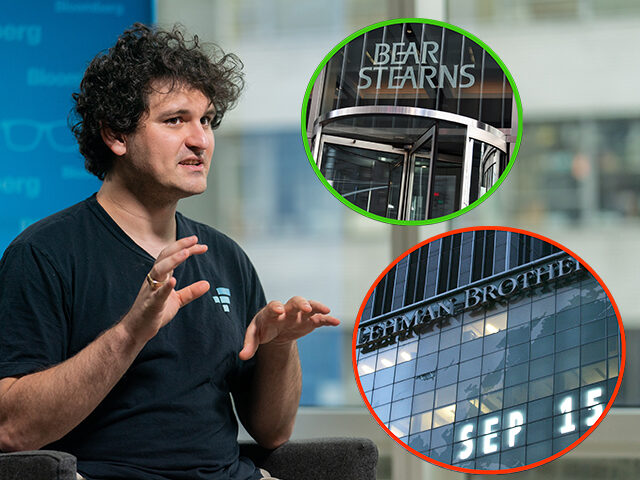
COMMENTS
Please let us know if you're having issues with commenting.